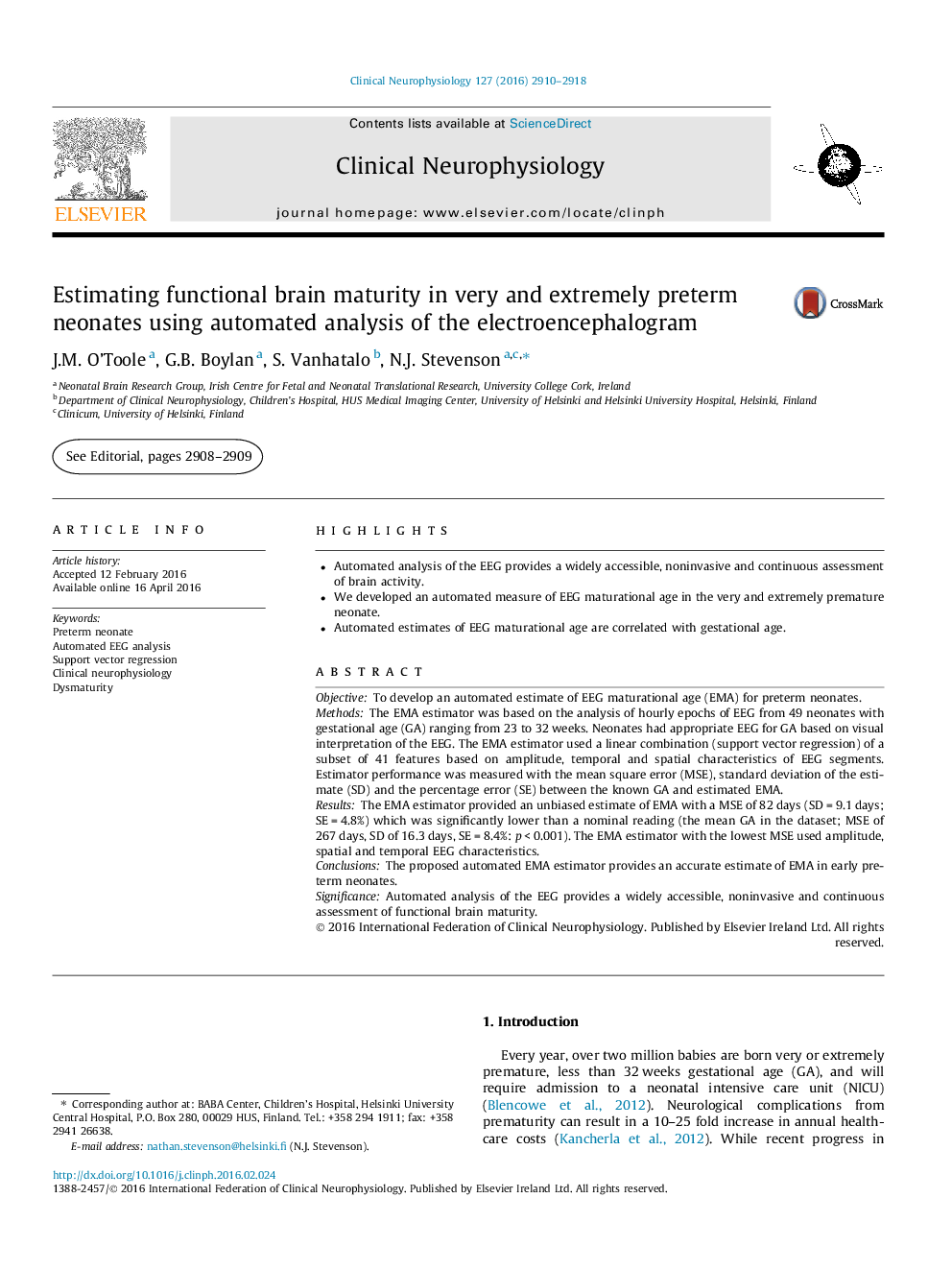| Article ID | Journal | Published Year | Pages | File Type |
|---|---|---|---|---|
| 3042658 | Clinical Neurophysiology | 2016 | 9 Pages |
•Automated analysis of the EEG provides a widely accessible, noninvasive and continuous assessment of brain activity.•We developed an automated measure of EEG maturational age in the very and extremely premature neonate.•Automated estimates of EEG maturational age are correlated with gestational age.
ObjectiveTo develop an automated estimate of EEG maturational age (EMA) for preterm neonates.MethodsThe EMA estimator was based on the analysis of hourly epochs of EEG from 49 neonates with gestational age (GA) ranging from 23 to 32 weeks. Neonates had appropriate EEG for GA based on visual interpretation of the EEG. The EMA estimator used a linear combination (support vector regression) of a subset of 41 features based on amplitude, temporal and spatial characteristics of EEG segments. Estimator performance was measured with the mean square error (MSE), standard deviation of the estimate (SD) and the percentage error (SE) between the known GA and estimated EMA.ResultsThe EMA estimator provided an unbiased estimate of EMA with a MSE of 82 days (SD = 9.1 days; SE = 4.8%) which was significantly lower than a nominal reading (the mean GA in the dataset; MSE of 267 days, SD of 16.3 days, SE = 8.4%: p < 0.001). The EMA estimator with the lowest MSE used amplitude, spatial and temporal EEG characteristics.ConclusionsThe proposed automated EMA estimator provides an accurate estimate of EMA in early preterm neonates.SignificanceAutomated analysis of the EEG provides a widely accessible, noninvasive and continuous assessment of functional brain maturity.
